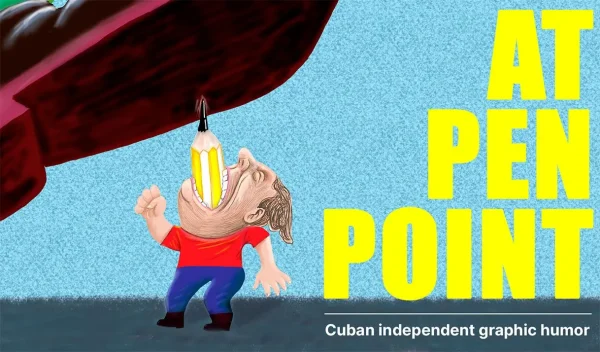Exhibition of Cuban Editorial Cartoons at Miami’s FIU

HAVANA TIMES – Twenty artworks that have been published since 2019 by artists in the graphic humor supplements Xel2 and Matraca, are on display in the Green Library Gallery, on the Modesto Maidique campus of Florida International University (FIU), in Miami, from January 9 -31, 2023.
The exhibition is called “At Pen Point”, and is co-sponsored by the Cuban Research Institute and FIU’s Special Collections and University Archives Department.
A selection of caricatures and comic strips created by Mary Esther Lemus, Wimar Verdecia, Ramses Morales, Fabio Sotolongo, Iran Hernandez, Alen Lauzan, Brady Izquierdo and Gustavo Rodriguez (Garrincha) form part of the exhibition. They take a look at breakthrough socio-political events in Cuba over recent years with humor, ease and wit.
Access to digital technology and the Internet has opened up a space for a community of Cuban graphic artists to multiply and mobilize, putting their art and creativity at the service of the most pressing discussions in Cuban society today (including the international Cuban community in the diaspora, but always interacting with those “here” and “there”).
The role of editorial cartoons and satire is inherent to the work of the press. The development of numerous independent Cuban media platforms has allowed Cuban editorial cartoons to be saved from the creative prison and isolation it was subjected to by the Communist Party’s hegemonic power of the media, for over 60 years. Today, independent works are published in newspapers such as Diario de Cuba, Periodico Cubano, ADN Cuba, Arbol Invertido and El Toque.
Xel2, an editorial cartoon supplement published on El Toque from 2019 up until 2022, contributed a great deal to the mobilization of the editorial cartoon movement on independent media platforms. Xel2 granted an exclusive and coherent space for graphic artists, while also shedding a light on new voices.
Works by cartoonists would frequently go “viral”, because of their connection to the most pressing debates in society and because they were in a format that was so easy to share; a summary of political reflections that normally reach a lot more people than words.
Caricatures by artists allow hundreds of users on social media to access a form of speech that is becoming more and more democratic. The strength of these messages has inevitably made them a target for the repressive machine of Diaz-Canel’s Government, which lacks the resources it needs to counteract the visual artillery of political cartoons. For that reason, Cuba’s State Security persecutes graphic artists in their general crusade against free speech.
Blackmail and threats of criminal prosecution led to the dismantling of the Xel2 project, but the cartoonist community in Cuba isn’t alone and it’s impossible to silence their voices. Matraca was born in response, another space that carries on and will continue to shine a light on caricatures and political cartoons.
The exhibition now on display at FIU will have an official opening ceremony on Wednesday January 18, (free entry) at 6 PM, in room 220 of the Green Library. Professor Jorge Duany, director of the Cuban Research Institute, David Horta Pimentel, the exhibition’s curator, and Jose Jasan Nieves, El Toque’s editor-in-chief will all be present.





